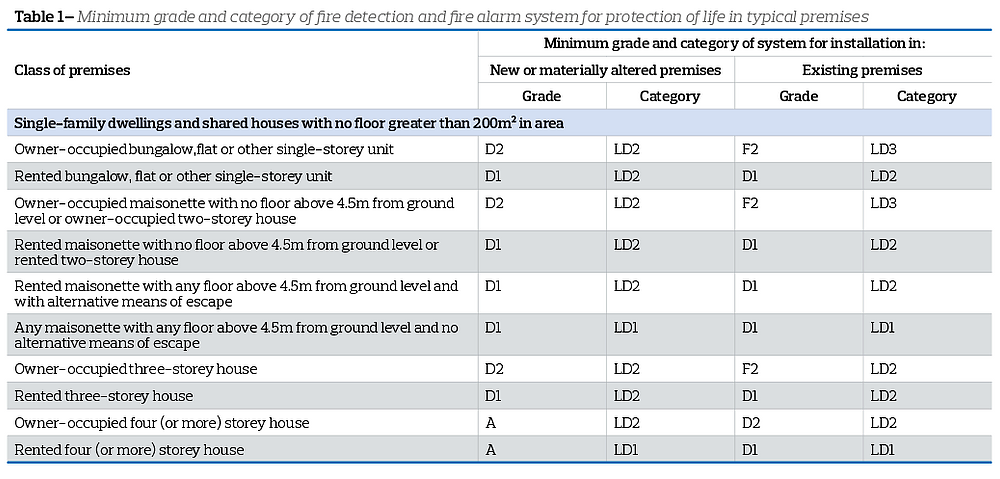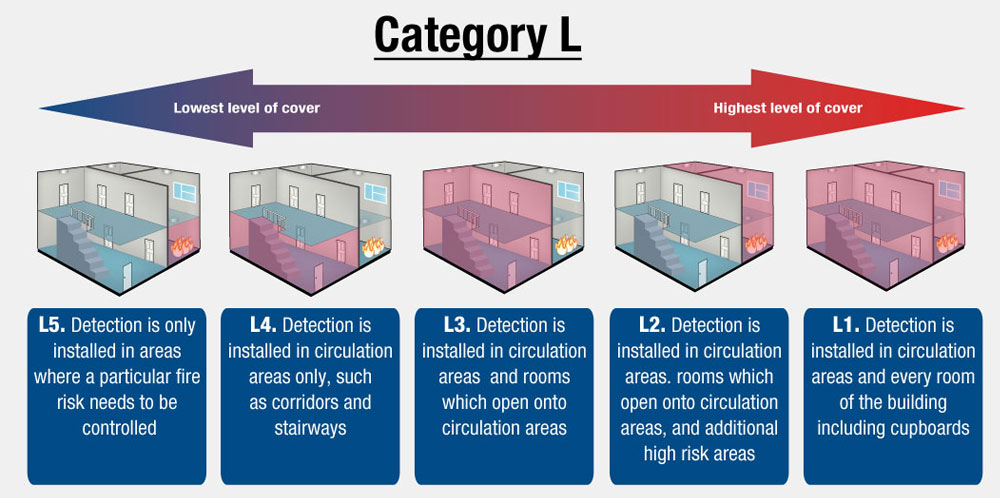All landlords are now obliged to ensure a carbon monoxide alarm is installed in any room of their homes where there is a fixed combustion appliance (including a gas boiler). This is in addition to the requirement to install smoke and heat alarms. Where a new fixed combustion appliance is installed, a carbon monoxide alarm will be required to be installed by law. Although gas cooker appliances are excluded from the new rules, we highly recommend this for total peace of mind.
Following recent parliamentary approval, both social and private rented sector (PRS) landlords will now be legally required to repair or replace smoke, heat or carbon monoxide detectors once they have been informed that they are faulty. Although testing throughout the duration of a tenancy will remain the resident’s responsibility the landlord must prove they detectors are being maintained correctly. The only way to comply with this directive is to have all the installed devices in all rented properties inspected and tested every 12 months.
The key changes are:
The UK Government has also amended the statutory guidance (Approved Document J) supporting Part J of the Building Regulations relating to where alarms are installed and to ensure that alarms meet relevant standards.
Trying to identify the correct type of fire, heat or CO2 detection system for a particular property can be a minefield. You will discover misleading, contradicting or even false information listed on lots of different websites.
With different manufacturers making their own devices with differing specifications, its difficult to make sure your tenants are fully protected, as well as fulfilling your obligations by law.
Changes to BS5839-6, the British Standard that deals with fire alarms and fire detection systems within dwellings were amended in 2019 and again in 2020. This could mean the level of protection you may already have installed may not be adequate or compliant. This is especially important in short term rental properties for Airbnb or short-term holiday lets. If you rent a property for any period of time, you have certain legal responsibilities to the people you let to, even if it’s just for a few days. Failure to comply with these latest changes could leave you liable for prosecution, a fine or, if the worst should happen, being held responsible for someone’s death. It’s always advisable to have a professional explain and specify your requirements, they will make sure you’re installing the right level of protection for your tenants or guests, as well as being fully compliant with regard to your legal responsibilities. It’s not always wise to take the word of estate or letting agents, we have found some agents offering guidance that can be equally misleading.
ElectriciansOncall have been supplying and installing fire, heat and CO2 detection equipment for over 30 years. Whether it’s a single room studio apartment or, a large commercial property you let, we offer the knowledge and experience to make sure your tenants or guests are properly protected.
System Categories
There are two main categories:
Of these 2 categories, the majority of installations, when you live in the property or, rent the property out, fall under the category of L type systems, they are installed to protect life. The inclusion of Category P requirements within fire detection systems are there to protect the property.
Buildings covered by BS5839-6:2019+A1: 2020
BS 5839 Part 6 covers the following domestic building types:
Table 1 the minimum category and grade requirements under the latest amendment to BS5839-6:2019.

So, we’re presuming the property you require protection for is within category L. So what do you have to install, and where?
This is the grading system.

Grading is dictated by the property use, the size of the property and who will use the property. Other factors to take into consideration are will the property be empty for any periods of time, whether lots of different people, not familiar with the property would be using the property regularly or, whether there are vulnerable persons either living in or, likely to use the property. In order to correctly specify the correct grade of system, these and other factors are all taken into account. This information is collected as part of the survey for the property to be protected. Although there are set grades stated as the minimum level of protection, you may find that once the survey had been completed, and all factors have taken into account, your grading may need to be tweaked in order to offer the right level of protection in your particular situation.
As a landlord, you might feel your trying to do everything right with regards the smoke, heat and CO2 detectors installed in your rental properties. You check each device before the start of the tenancy, which you’re legally obliged to but, at the end of the day, if you don’t live at the property, you’re reliant on your tenants regularly testing the installed devices, not removing them if they prove a nuisance or, damaging them. This could potentially leave your largest investment without adequate protection should a fire occur. What’s more, if it’s found during any subsequent investigation that a device was removed, you could find your insurance company doesn’t want to pay out. For this very reason, and for total peace of mind for both you and your tenants, ElectriciansOnCall are now able to offer live remote monitoring of the smoke, heat and CO2 alarms installed in your rental properties. Live monitoring 24 hours a day, 7 days a week. Should one of the installed devices indicate an alarm, develop a fault or, even be removed from its base, we are immediately notified. If you wish, you can also be notified via text message or email at the same time.
Whatever you decide, we’re happy to offer immediate attendance if required, 24 hours day at our reduced account holders rate or, we can arrange to call at a more convenient time to deal with any issues. All the devices we install are comprehensively covered by our 5 year, no quibble guarantee, if they develop a fault within this time, we’ll replace them for free.
The only thing we obviously can’t cover is damage or vandalism caused by your tenants, everything else is included.
What’s more, if you sign up to our monitored alarm service, as well as live monitoring, we’ll visit the property every year and clean, check, inspect and test all the installed devices at no additional cost to you. After this annual service an inspection certificate for ongoing compliance will also be issued. We’re sure you will agree, when it comes to protecting your tenants, as well as a large financial investment, nothing else comes close.
For more information about our live monitoring services or, any other issues or questions you may have, contact your local office today.